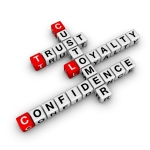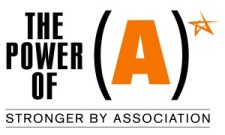The Loyalty Factor
2 September 2011 Leave a comment
As consumers, there are some products, brands, or stores we frequent out of habit. And in stable, calm and good times that’s enough. Trouble is, all it takes is the slightest little disruption to make “because I have always shopped here” an insufficient excuse for me not to take my business elsewhere. Associations are even more likely to get complacent and assume that membership loyalty runs deep, when it may just be a fragile habit.
The current economic downturn is testing the limits of member/customer loyalty severely. As budgets get tighter and every penny spent gets heightened scrutiny, even the most engaged members are taking a hard look at the relationship. Not too long ago, I had the opportunity to spend some time with marketing expert Jim Kane, author of Virtually Loyal and The Loyalty Switch. He draws a distinction between customer satisfaction and customer loyalty. Satisfaction is a reaction to a client’s past experience with you. Customer loyalty is about future behavior.
Economic security depends on converting your satisfied customer/member into a loyal customer/member. And that is all about establishing a relationship … something associations are ostensibly good at. But do we actually deliver on that feature of our association brand promise?
Customer relationships can range from antagonistic to loyal. When you have an antagonistic client relationship, the client is basically forced to do business with you. From the provider’s side of the relationship, this can be quite satisfying. You’re guaranteed the business regardless, so you can operate in a manner that suits you. (Associations offering mandatory licensing or certification programs or who have unique access to critical industry data or analysis take note.)  The danger, Kane points out, is that whatever factor is compelling the client to use you can change. Certification rules might be eliminated or a new research source might emerge.
The danger, Kane points out, is that whatever factor is compelling the client to use you can change. Certification rules might be eliminated or a new research source might emerge.
One step above an antagonistic relationship is the purely transactional relationship. You offer a satisfactory service at a fair price that meets the member’s needs. An equal exchange. Neither side has any complaints, but no further sense of ongoing relationships exists.
Meet that standard consistently and it might grow to what Kane calls the predisposed relationship. The client is basically content. All things being equal, they will keep coming back. Most employment and client relationships, he contends, stop at this level. Its fine when times are stable and the economy is good. But that solid ground turns to quicksand the minute times get tough.
Which brings us to the highest level of the client/provider relationship: loyalty. Kane contends that these relationships are nearly unbreakable. They are based on more than price, quality or ability. Loyalty means there is an emotional bond: the member finds what you do indispensable, and they will fight to preserve the relationship, even when external factors try to break the bond.
So what characterizes this highest level of loyalty? Kane identifies seven factors:
1. Competency: you are able do what you claim you can do.
2. Integrity: the member knows they can count on you to actually do it.
Kane calls these first two factors the ante you pay just to get into the game. You don’t get any credit for them.
3. Recognition: the member knows they aren’t your only member, but they don’t feel like just a number to the association.
4. Savvy: most marketing messages are about what we do. But do we demonstrate an equal appreciation of what the member cares about? [I think a better word for this factor might be demonstrated empathy.]
5. Proactivity: Do we anticipate what the member needs, even before they recognize that need themselves?
6. Chemistry: Remember, we are talking about a relationship that extends beyond any single transaction. Do your members enjoy the experience of working with you?
7. Purpose: Do your members feel like the association stands for something bigger than your needs as a provider and their needs as a user?

